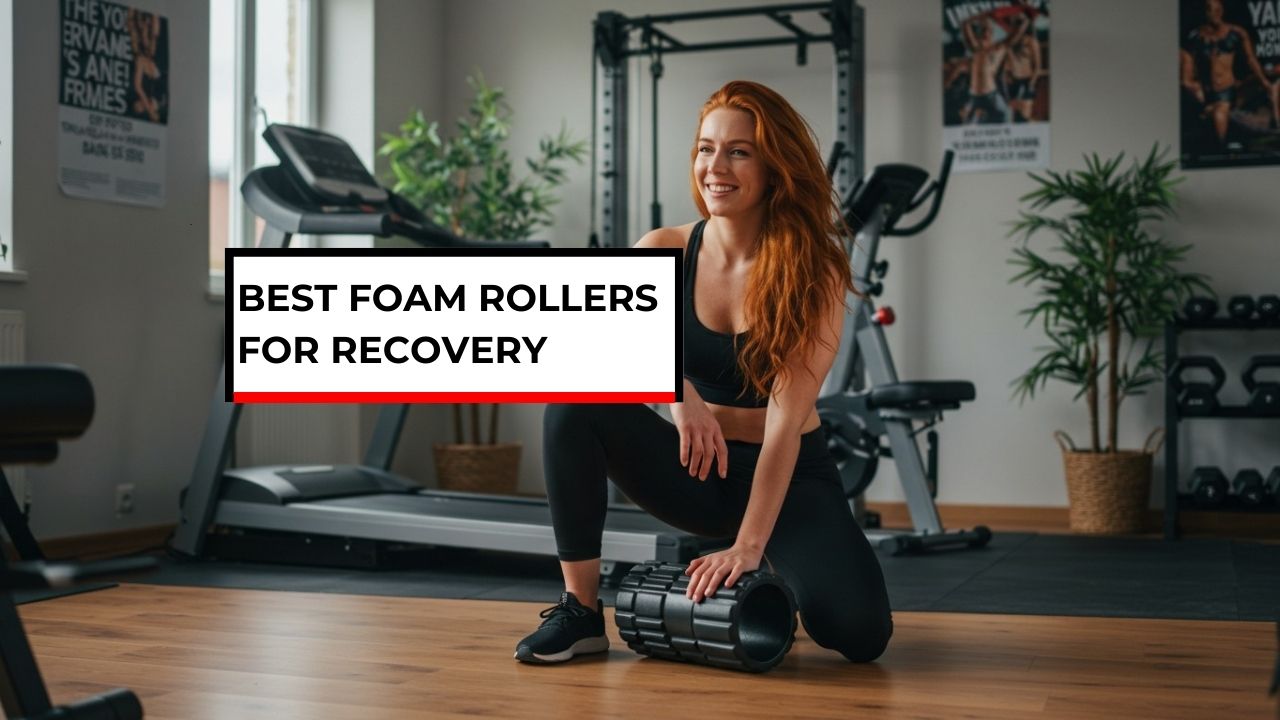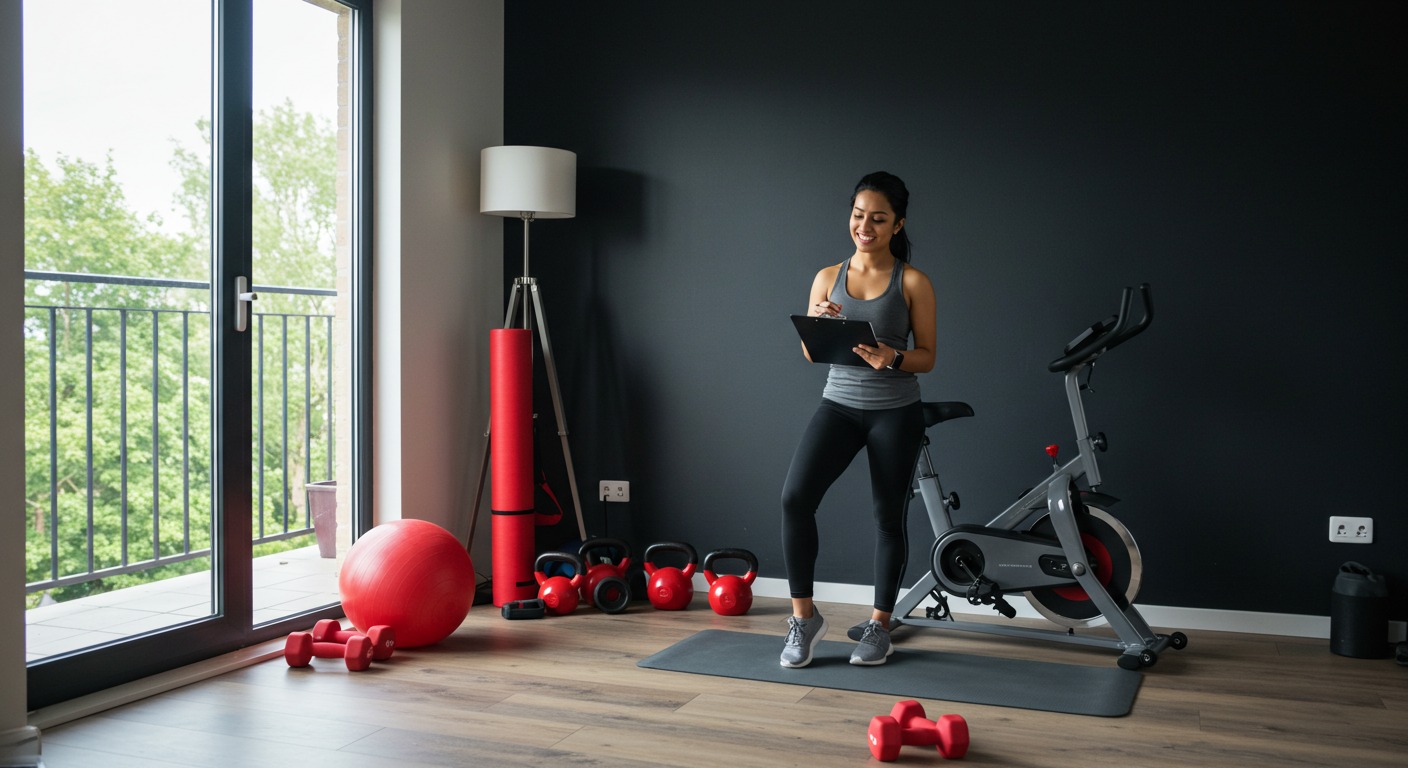Disclosure Information
This blog contains affiliate links. If you make a purchase through one of these links, our team may earn a commission at no extra cost to you. Learn more. Thanks for your support!
Post-workout recovery is just as important as the exercise itself. Among the most effective recovery tools available today are foam rollers – cylindrical self-massage devices that help release muscle tension and improve mobility.
Whether you’re an athlete, fitness enthusiast, or someone dealing with muscle tightness, the right foam roller can make a significant difference in your recovery process.
This comprehensive guide explores everything you need to know about foam rollers – from their benefits and types to the best models for different recovery needs.
The Quick Overview: Best Foam Rollers
- Best Overall: TriggerPoint GRID – Multi-density, portable.
- Best Budget: AmazonBasics High-Density Foam Roller – Durable, under $20.
- Best Premium: Hyperice Vyper 3.0 – Vibrating, firm.
- Best for Travel: Morph Collapsible Foam Roller – Collapsible, textured.
- Best for Beginners: OPTP PRO-ROLLER Soft Density Foam Roller – Soft, 36-inch.
Understanding Foam Rolling
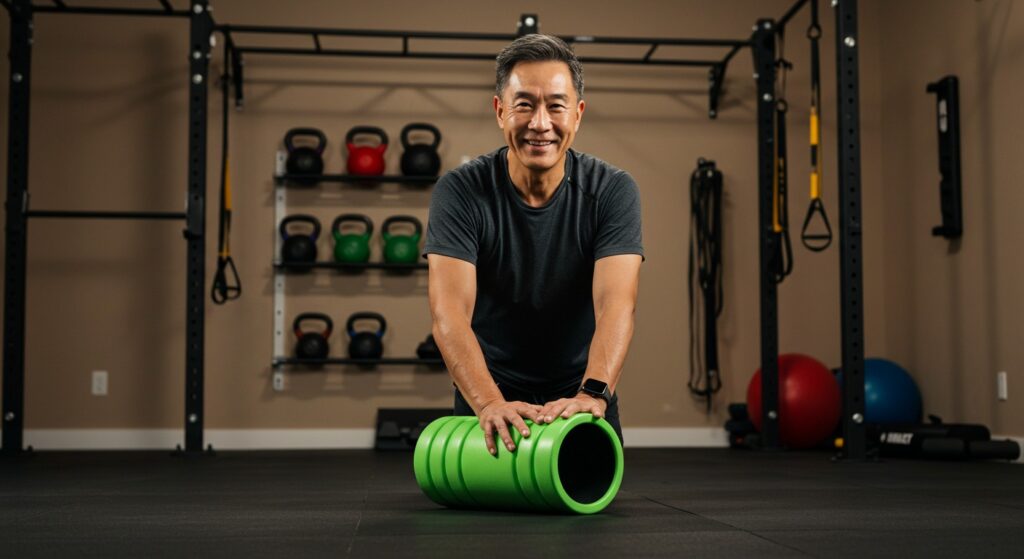
Foam rolling is a form of self-myofascial release (SMR) – a fancy term for self-massage that targets the fascia. Fascia is the connective tissue surrounding muscles, bones, and joints throughout your body.
When this tissue becomes tight or knotted, it can cause pain, restricted movement, and decreased performance. Foam rolling helps release these restrictions by applying pressure to specific points.
The technique works by breaking up adhesions in soft tissue, improving blood flow, and enhancing tissue elasticity. This process is similar to what you might experience during a deep tissue massage.
Benefits of Foam Rolling
Muscle Recovery Enhancement
Foam rolling accelerates the recovery process by increasing blood flow to worked muscles. This improved circulation helps remove metabolic waste products while delivering oxygen and nutrients.
A 2019 meta-analysis reported that post-exercise foam rolling slightly attenuated decreases in sprint and strength performance and reduced muscle pain perception.
Reduced Muscle Soreness
One of the most immediate benefits of foam rolling is decreased delayed onset muscle soreness (DOMS). Regular use can significantly reduce the intensity and duration of post-workout pain.
Improved Range of Motion
Tight muscles and fascia can limit your movement capabilities. Foam rolling helps release these restrictions, leading to improved flexibility and joint mobility.
Studies show that just 5-10 minutes of foam rolling can temporarily increase range of motion by 10-15%.
Corrected Muscle Imbalances
Many people develop muscle imbalances due to lifestyle factors or training habits. Regular foam rolling helps identify and address these imbalances before they lead to injury.
Stress Reduction
Beyond the physical benefits, foam rolling activates the parasympathetic nervous system – your body’s “rest and digest” mode. This can help reduce overall stress levels.
Cost-Effective Treatment
Professional massage therapy can be expensive. Foam rolling provides similar benefits at a fraction of the cost, making it an accessible recovery option for everyone.
Types of Foam Rollers
There are several types of foam rollers available, each designed for specific recovery needs and experience levels. Understanding these differences will help you select the most appropriate option.
1. Standard Foam Rollers
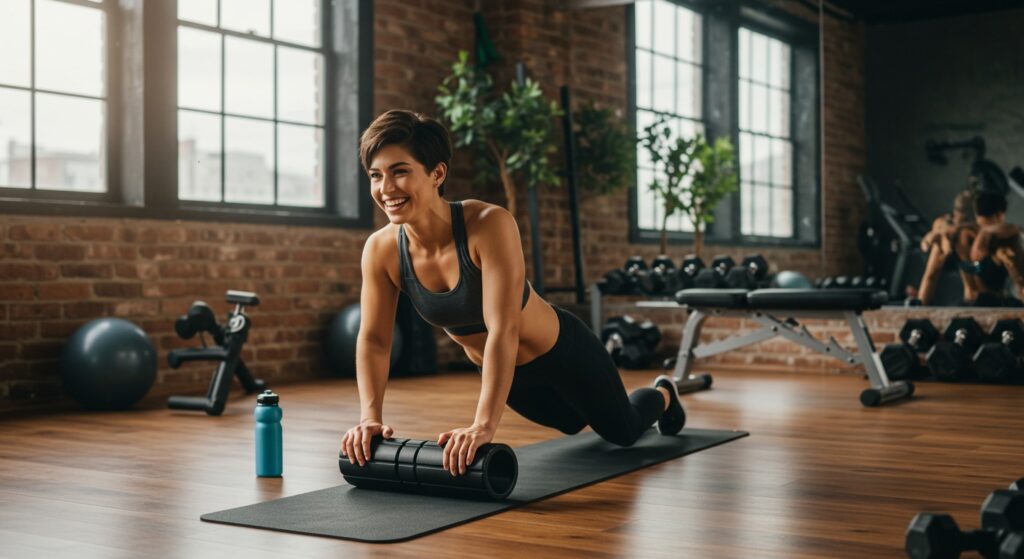
Standard foam rollers are uniform cylinders made from EVA or PE foam. They come in different densities, from soft to firm.
Best for: Beginners and those with high pain sensitivity.
Top Pick: AmazonBasics High-Density Foam Roller
This affordable roller offers excellent durability and comes in multiple length options. Its medium-firm density makes it versatile for most users.
The smooth surface provides consistent pressure, while the moisture-resistant material ensures longevity and easy cleaning.
Buy on Amazon – AmazonBasics High-Density Foam Roller
Premium Option: OPTP PRO-ROLLER Soft Density Foam Roller
This professional-grade standard roller features closed-cell EVA foam that maintains its shape even after years of use. It’s slightly softer, making it ideal for sensitive individuals.
Its longer length (36 inches) allows for versatile full-body rolling techniques.
Buy on Amazon – OPTP PRO-ROLLER Soft Density Foam Roller
2. Textured Foam Rollers
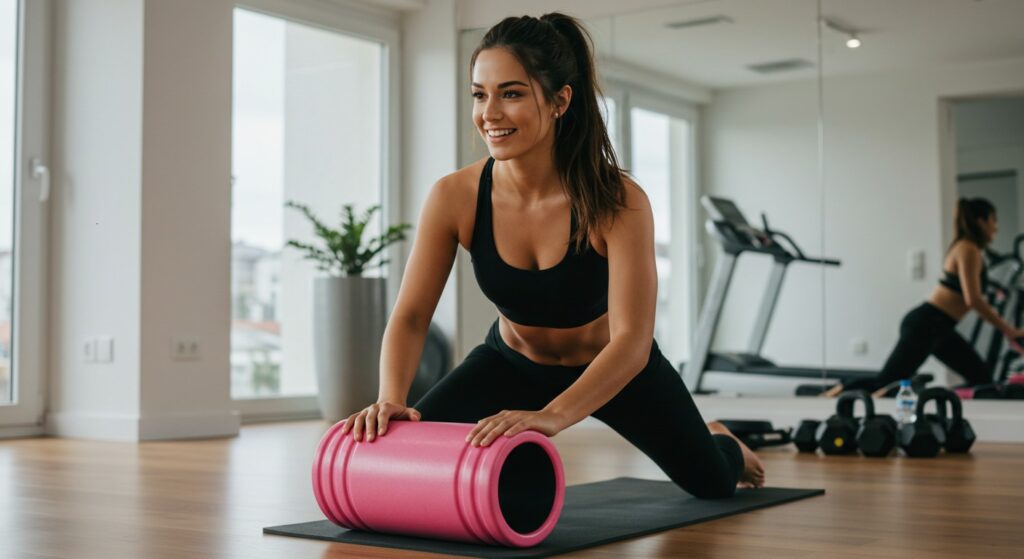
Textured foam rollers feature ridges, knobs, or grids designed to dig deeper into muscle tissue. These patterns help target trigger points more effectively.
Best for: Experienced users seeking deeper tissue work.
Top Pick: TriggerPoint GRID Foam Roller
This popular textured roller features a patented design with different surface patterns. The hollow core maintains shape while reducing weight.
Its compact size makes it perfect for travel, while the textured surface effectively targets trigger points.
Buy on Amazon – TriggerPoint GRID Foam Roller
Budget-Friendly Option: 321 STRONG Foam Roller
This affordable textured roller includes multiple density zones to target different muscle groups. The lightweight design and moderate firmness make it accessible to most users.
Despite its budget price, it offers impressive durability and effective muscle release capabilities.
Buy on Amazon – 321 STRONG Foam Roller
3. Vibrating Foam Rollers
Vibrating foam rollers incorporate electronic vibration into the rolling experience. This vibration helps penetrate deeper into tissue and can reduce discomfort during rolling.
Best for: Athletes seeking enhanced recovery and those who find traditional rolling too painful.
Top Pick: Hyperice Vyper 3.0
This premium vibrating roller offers three speeds and rechargeable battery operation. The combination of vibration and firm texture provides exceptional myofascial release.
Its ergonomic design and powerful motor make it a favorite among professional athletes and serious fitness enthusiasts.
Buy on Amazon – Hyperice Vyper 3.0
Budget-Friendly Option: Nextrino Vibrating Foam Roller
This more affordable vibrating option offers four intensity levels and a rechargeable battery. The textured surface combined with vibration provides effective trigger point release.
While not as powerful as premium models, it delivers impressive results at half the price.
Buy on Amazon – Nextrino Vibrating Foam Roller
4. Foam Roller Sticks
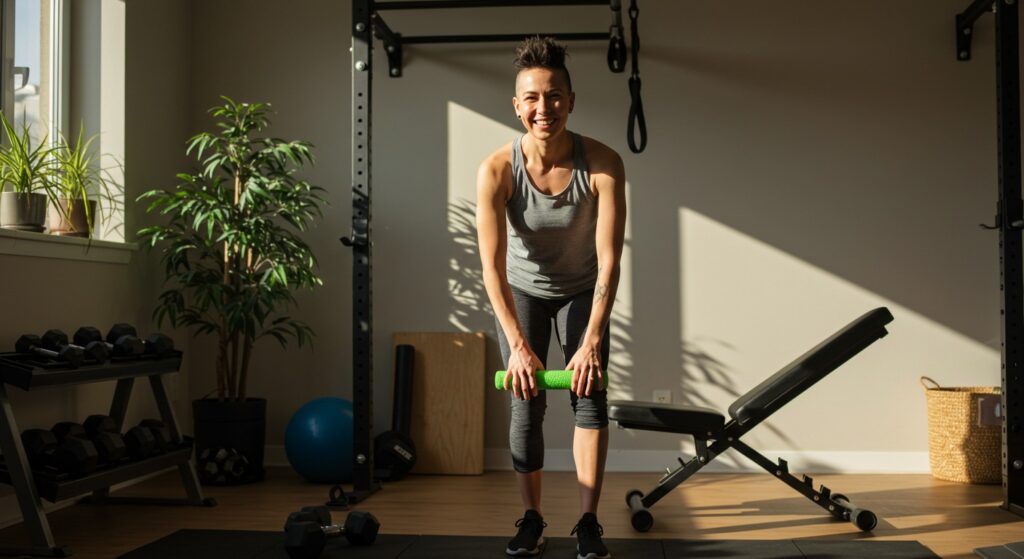
Roller sticks consist of a rigid core with rotating rollers. They allow for more targeted pressure and are especially useful for hard-to-reach areas.
Best for: Targeted relief and travel.
Top Pick: The Stick Body Stick
This classic roller stick features independent rollers that flex around contours of muscles. The handles allow you to control pressure with precision.
Its portable design makes it perfect for athletes who need recovery tools on the go.
Buy on Amazon – The Stick Body Stick
Budget Option: Gaiam Restore Massage Stick Roller
This affordable stick roller features ergonomic handles and flexible construction. The durable plastic rollers provide firm pressure without excessive pain.
At about $20, it offers excellent value for those seeking a portable recovery tool.
Buy on Amazon – Gaiam Restore Massage Stick Roller
5. Foam Massage Balls
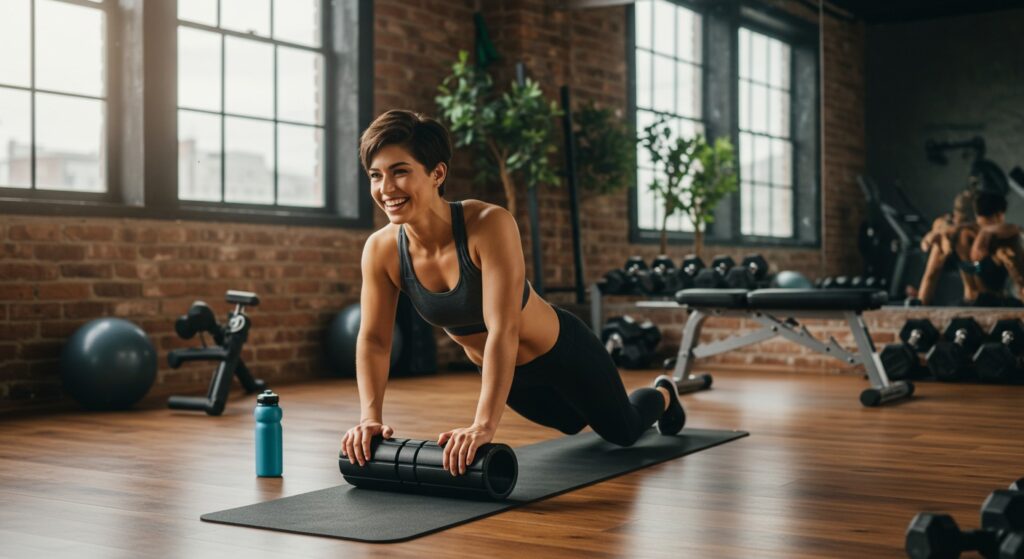
Foam rolling balls allow for pinpoint pressure on specific trigger points. Their small size makes them perfect for targeting smaller muscles and hard-to-reach areas.
Best for: Targeted trigger point release in areas like feet, hips, and shoulders.
Top Pick: TriggerPoint MB5 Massage Ball
This 5-inch diameter ball offers the perfect size for most body parts. The dense construction provides effective pressure for stubborn knots.
Its textured surface increases effectiveness, while the durable design ensures years of use.
Buy on Amazon – TriggerPoint MB5 Massage Ball
Budget Option: 5BILLION Massage Ball Set
This affordable set includes multiple sizes for targeting different areas. The variety allows for comprehensive recovery from head to toe.
The high-density rubber construction provides durability without sacrificing effectiveness.
Buy on Amazon – 5BILLION Massage Ball Set
How to Choose the Right Foam Roller
Density Considerations
Foam roller density directly affects the intensity of your rolling experience:
- Soft density: Best for beginners and those with high pain sensitivity
- Medium density: Good all-purpose option for most users
- High density: Ideal for experienced users and deeper tissue work
According to a 2023 consumer survey, 65% of new foam roller users report abandoning the practice due to choosing a roller that was too firm initially. (Source: American Physical Therapy Association)
Size and Shape
Foam rollers come in various lengths and diameters:
- Standard (36 inches): Best for back rolling and versatile use
- Half-length (18 inches): Good for travel and smaller spaces
- Mini (12 inches or less): Perfect for targeting specific areas and travel
Consider your available storage space and primary usage areas when selecting a size.
Surface Texture
The surface texture determines how the roller interacts with your muscles:
- Smooth: Provides even pressure distribution
- Grid/textured: Targets trigger points more effectively
- Knobbed: Offers the deepest trigger point work
Beginners should typically start with smooth or lightly textured rollers before progressing.
Material Quality
Higher-quality materials generally offer better durability and performance:
- EVA foam: Softer feel, less durability
- PE foam: Firmer feel, moderate durability
- EPP foam: Firmest feel, highest durability
- Hollow core designs: Balance between firmness and weight
Quality materials can significantly extend a foam roller’s lifespan.
Price Considerations
Foam rollers range widely in price:
| Price Range | Features | Best For |
| $10-$30 | Basic design | Beginners |
| $30-$60 | Textured surface | Regular users |
| $60-$200 | Vibration/heat | Serious athletes |
Consider your budget alongside your recovery needs and usage frequency.
Best Foam Rollers by Type
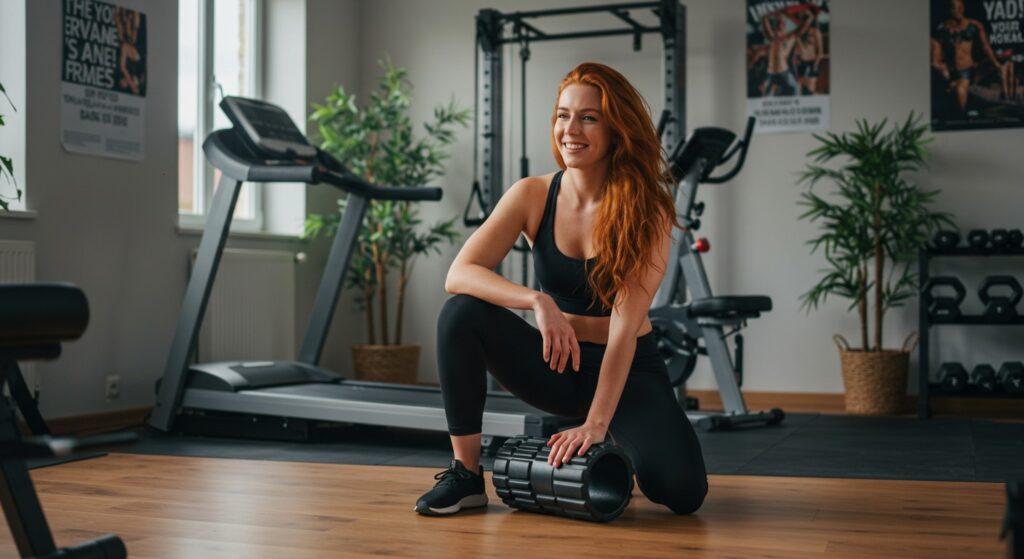
Best Overall Foam Roller: TriggerPoint GRID Foam Roller
This versatile roller strikes the perfect balance between effectiveness and accessibility. Its patented design features multiple density zones that replicate a therapist’s hands.
Key Features:
- Patented multi-density exterior
- Hollow core construction
- 13 inches length (travel-friendly)
- 500-pound weight limit
- Includes free online instructional videos
Best Budget Foam Roller: AmazonBasics High-Density Foam Roller
For under $20, this simple yet effective roller delivers exceptional value. Its high-density foam provides sufficient firmness for most users.
Key Features:
- Multiple size options (12, 18, 36 inches)
- Lightweight design
- Moisture-resistant foam
- Durable construction
- Simple, effective design
Best Premium Foam Roller: Hyperice Vyper 3.0
Though expensive, this vibrating foam roller offers unmatched recovery capabilities. The combination of texture and three vibration settings allows for customized recovery sessions.
Key Features:
- Three vibration settings
- Rechargeable battery
- Firm, textured surface
- Digital controls
- Carrying case included
Best for Travel: Morph Collapsible Foam Roller
This innovative roller collapses to one-third of its expanded size, making it perfect for travelers. Despite its portable design, it doesn’t compromise on effectiveness.
Key Features:
- Collapsible design
- Medium-firm density
- Textured surface
- Lightweight construction
- TSA-friendly size when collapsed
Best for Beginners: OPTP PRO-ROLLER Soft Density
This professional-grade soft roller provides effective release without overwhelming sensitivity. Its longer length accommodates full-body techniques.
Key Features:
- Softer density for sensitive users
- 36-inch length
- Smooth surface
- Closed-cell EVA foam
- Professional-grade durability
Foam Rolling Techniques
Full Back Release
- Sit on the floor with the roller behind your lower back
- Gently lean back, supporting your weight with your hands
- Slowly roll from lower to upper back
- Spend extra time on tight areas
- Roll for 1-2 minutes
Quad Release
- Lie face down with the roller under your thighs
- Support your upper body with forearms
- Roll from hip to knee
- To increase intensity, roll one leg at a time
- Roll each section for 30-60 seconds
IT Band Release
- Lie on your side with the roller under your thigh
- Cross your top leg in front for support
- Roll along the outside of your thigh
- Keep your core engaged throughout
- Roll each side for 30-60 seconds
Calf Release
- Sit on the floor with the roller under your calves
- Lift hips off the floor, supporting with hands
- Roll from ankles to below knees
- For deeper pressure, cross one leg over the other
- Roll for 30-60 seconds per leg
Upper Back and Shoulders
- Lie with the roller positioned at mid-back
- Hands behind head or crossed at chest
- Roll from mid-back to shoulders
- Slightly twist to target shoulder blades
- Roll for 1-2 minutes
Maintenance and Care
Cleaning Tips
Wipe down your foam roller regularly with a damp cloth. For deeper cleaning, use mild soap and water, allowing it to dry completely before storage.
Avoid harsh chemicals or bleach, as these can degrade the foam material over time.
Storage Recommendations
Store your foam roller in a clean, dry place away from direct sunlight. Excessive heat can warp or degrade foam materials.
Avoid placing heavy objects on top of your roller, as this can create deformations in the surface.
When to Replace
Most quality foam rollers should last 1-2 years with regular use. Signs that it’s time for replacement include:
- Visible compression or deformation
- Cracks or tears in the surface
- Significantly reduced firmness
- Uneven texture or density
Extending Lifespan
Rotate your foam roller regularly to prevent uneven wear. Follow the manufacturer’s specific care instructions for your model.
For vibrating rollers, ensure you’re following proper battery care protocols to maximize electronic component longevity.
FAQs
How often should I use a foam roller?
Most experts recommend foam rolling 3-5 times per week for maintenance. During periods of intense training or when addressing specific issues, daily rolling may be beneficial.
When is the best time to foam roll?
Foam rolling can be effective both before and after workouts. Pre-workout rolling helps increase blood flow and prepare muscles, while post-workout rolling aids recovery.
How long should I foam roll each muscle group?
Spend 30-60 seconds on each muscle group during a session. For particularly tight areas, you might extend this to 90-120 seconds.
Can foam rolling be harmful?
While generally safe, avoid rolling directly on joints, bones, or injured areas. Those with certain medical conditions should consult a healthcare provider before beginning.
Is foam rolling painful?
Some discomfort is normal, especially when targeting trigger points. However, pain shouldn’t be severe – if it is, reduce pressure or try a softer roller.
Can foam rolling replace stretching?
Foam rolling complements but doesn’t replace stretching. For optimal flexibility and recovery, incorporate both practices into your routine.
Conclusion
A quality foam roller is an invaluable addition to any recovery toolkit. By understanding the different types available and selecting one that matches your specific needs, you can significantly enhance your post-workout recovery and overall mobility.
Whether you’re dealing with post-workout soreness, chronic muscle tightness, or simply looking to improve your movement quality, regular foam rolling can provide remarkable benefits at a fraction of the cost of professional treatments.
Start with an appropriate density for your experience level, learn proper techniques, and be consistent with your rolling routine. Your muscles will thank you for the investment in their recovery and performance. </antArt

